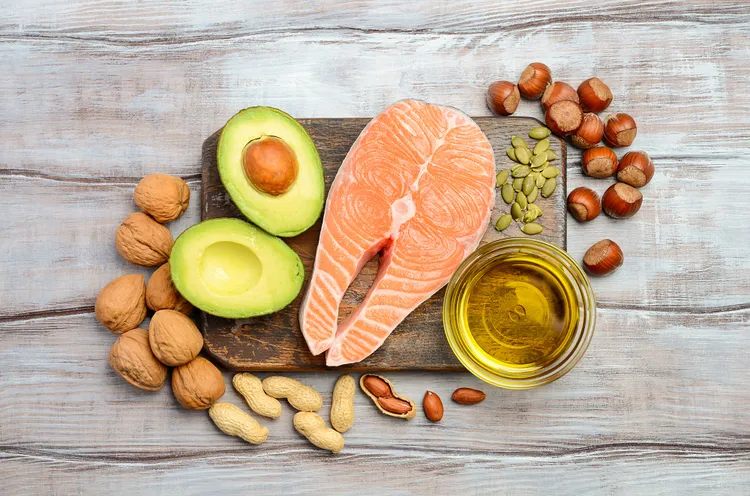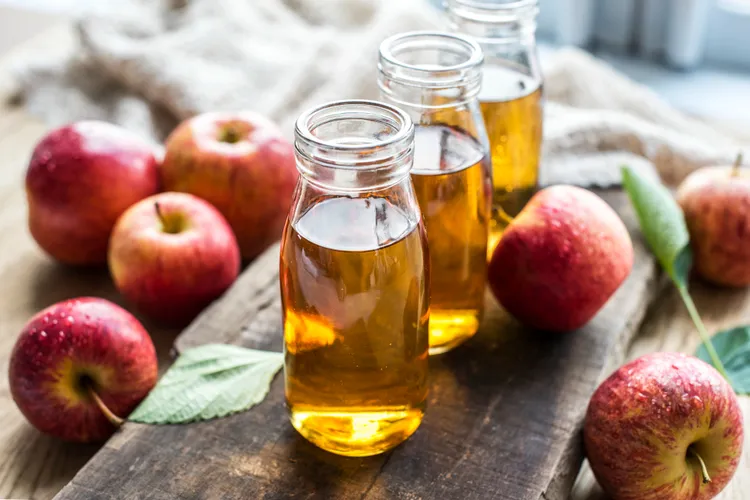Healthy Fats vs. Unhealthy Fats: Guide to Making Smart Dietary Choices
Fats have long been a controversial topic in nutrition, swinging from demonization to celebration as science evolves. Once blamed for heart disease and obesity, fats are now recognized as essential for health - when chosen wisely. However, not all fats are created equal. The distinction between healthy and unhealthy fats can profoundly impact your energy, heart health, brain function, and overall well-being. In this in-depth blog post, we’ll explore the science behind healthy and unhealthy fats, their effects on the body, food sources, and practical tips for incorporating the right fats into your diet.

Why Fats Matter
Fats are one of the three macronutrients (alongside carbohydrates and proteins) and are vital for numerous bodily functions:
- Energy Source: Fats provide 9 calories per gram, making them a dense energy source.
- Cell Structure: They form the building blocks of cell membranes.
- Hormone Production: Fats are needed to synthesize hormones like testosterone and estrogen.
- Nutrient Absorption: Fat-soluble vitamins (A, D, E, K) require dietary fat for absorption.
- Brain Health: The brain is 60% fat, and certain fats support cognitive function and mood.
- Inflammation Regulation: Some fats reduce inflammation, while others promote it.
Despite these benefits, the type and quality of fat you consume matter immensely. Healthy fats can enhance your health, while unhealthy fats can contribute to chronic diseases like heart disease, diabetes, and obesity. Let’s break down the key differences.
What Are Healthy Fats?
Healthy fats are those that support bodily functions, reduce inflammation, and promote long-term health. They are primarily unsaturated fats, which include monounsaturated and polyunsaturated fats, as well as certain saturated fats when consumed in moderation from whole food sources.
Types of Healthy Fats
- Monounsaturated Fats (MUFAs):
- Structure: These fats have one double bond in their chemical structure, making them liquid at room temperature but solid when chilled.
- Benefits: MUFAs improve cholesterol levels by raising HDL (good cholesterol) and lowering LDL (bad cholesterol). They also support heart health and insulin sensitivity, per a 2016 American Journal of Clinical Nutrition study.
- Sources: Olive oil, avocados, nuts (almonds, cashews, peanuts), seeds (pumpkin, sesame), and nut butters.
- Polyunsaturated Fats (PUFAs):
- Structure: These fats have multiple double bonds, keeping them liquid even at low temperatures.
- Benefits: PUFAs, particularly omega-3 fatty acids, reduce inflammation, support brain health, and lower heart disease risk. A 2020 Circulation study linked omega-3 intake to reduced cardiovascular events.
- Types:
- Omega-3 Fatty Acids: Found in fatty fish (salmon, mackerel, sardines), flaxseeds, chia seeds, walnuts, and algae oil.
- Omega-6 Fatty Acids: Found in sunflower oil, corn oil, and some nuts. While essential, excessive omega-6 intake can promote inflammation if not balanced with omega-3s.
- Ideal Ratio: The modern diet often has a 20:1 omega-6 to omega-3 ratio, far from the optimal 4:1 or lower, per a 2018 Nutrients study.
- Saturated Fats (in Moderation):
- Structure: Saturated fats have no double bonds, making them solid at room temperature.
- Benefits: Once vilified, saturated fats from whole foods can be part of a healthy diet in moderation. They provide energy and support hormone production. A 2020 Journal of the American College of Cardiology study found no clear link between moderate saturated fat intake and heart disease when consumed from natural sources.
- Sources: Coconut oil, butter, ghee, whole-fat dairy, and grass-fed meats.
- Caveat: Limit to 10% of daily calories, as excessive intake may raise LDL cholesterol.
Benefits of Healthy Fats
- Heart Health: MUFAs and omega-3s lower blood pressure, reduce triglycerides, and improve cholesterol profiles.
- Brain Function: Omega-3s, especially DHA, support memory, focus, and mood, per a 2021 Frontiers in Aging Neuroscience study.
- Weight Management: Healthy fats increase satiety, reducing overeating, according to a 2017 Appetite study.
- Anti-Inflammatory Effects: Omega-3s and MUFAs combat chronic inflammation, a driver of diseases like diabetes and arthritis.
- Skin and Hair Health: Fats support cell membrane integrity, promoting hydrated skin and shiny hair.
What Are Unhealthy Fats?
Unhealthy fats are those that promote inflammation, raise harmful cholesterol levels, and increase the risk of chronic diseases. These include trans fats and excessive amounts of certain saturated fats, particularly from processed sources.
Types of Unhealthy Fats
- Trans Fats (Artificial):
- Structure: Created through hydrogenation, which turns liquid oils into solid fats, extending shelf life.
- Risks: Trans fats raise LDL cholesterol, lower HDL cholesterol, and increase heart disease risk by 21% per 2% of daily calories, per a 2015 BMJ study. They also promote inflammation and insulin resistance.
- Sources: Found in partially hydrogenated oils (banned in many countries but still present in some processed foods), margarine, shortening, fried fast foods, and packaged baked goods (cookies, crackers).
- Status: The FDA banned artificial trans fats in the U.S. in 2018, but small amounts may remain in products labeled “0g trans fat” (up to 0.5g per serving).
- Excessive Saturated Fats (from Processed Sources):
- Risks: While moderate saturated fat from whole foods can be healthy, excessive intake from processed meats (sausages, bacon) or low-quality dairy raises LDL cholesterol and heart disease risk.
- Sources: Processed meats, fast food, and low-quality butter or cheese.
- Highly Refined Seed Oils (High in Omega-6):
- Structure: Oils like soybean, corn, and sunflower oil are high in omega-6 PUFAs and often heavily processed.
- Risks: Overconsumption disrupts the omega-6 to omega-3 balance, promoting inflammation. A 2019 Open Heart study linked high omega-6 intake to increased cardiovascular risk when not balanced with omega-3s.
- Sources: Found in fried foods, processed snacks, and many restaurant dishes.
Risks of Unhealthy Fats
- Heart Disease: Trans fats and excessive saturated fats increase plaque buildup in arteries, raising the risk of heart attacks and strokes.
- Inflammation: High omega-6 intake fuels chronic inflammation, linked to obesity, diabetes, and autoimmune disorders.
- Weight Gain: Unhealthy fats in processed foods are calorie-dense but low in satiety, leading to overeating.
- Metabolic Dysfunction: Trans fats and refined oils impair insulin sensitivity, increasing type 2 diabetes risk.
- Gut Health Issues: Unhealthy fats may disrupt the gut microbiome, per a 2020 Gut Microbes study, contributing to digestive problems.
Healthy Fats vs. Unhealthy Fats: Key Differences
Aspect | Healthy Fats | Unhealthy Fats |
Types | MUFAs, PUFAs (especially omega-3s), moderate saturated fats | Trans fats, excessive saturated fats, high omega-6 oils |
Sources | Olive oil, avocados, fatty fish, nuts, seeds | Margarine, fried foods, processed snacks |
Health Impact | Reduce inflammation, support heart and brain health | Promote inflammation, increase heart disease risk |
Processing | Minimally processed or whole foods | Highly processed or artificial |
Recommended Intake | 20–35% of daily calories | Minimize or avoid entirely |
Food Sources of Healthy and Unhealthy Fats
Healthy Fat Sources
- Oils: Extra virgin olive oil, avocado oil, coconut oil (in moderation), flaxseed oil.
- Nuts and Seeds: Almonds, walnuts, chia seeds, flaxseeds, pumpkin seeds.
- Fruits: Avocados, olives.
- Animal-Based: Fatty fish (salmon, mackerel, sardines), grass-fed beef, eggs.
- Dairy: Whole-fat Greek yogurt, ghee, moderate amounts of butter or cheese.
- Plant-Based: Tofu, tempeh, nut butters (without added sugars or oils).
Unhealthy Fat Sources
- Processed Foods: Packaged cookies, cakes, chips, and crackers.
- Fast Food: Fried chicken, French fries, burgers.
- Spreads: Margarine, shortening, some commercial peanut butters with hydrogenated oils.
- Oils: Soybean oil, corn oil, cottonseed oil (common in processed foods).
- Meats: Processed sausages, hot dogs, and bacon with additives.
How to Incorporate Healthy Fats into Your Diet
Making the switch to healthy fats is easier than you think. Here are practical tips to optimize your fat intake:
- Cook with Healthy Oils:
- Use extra virgin olive oil for salads or low-heat cooking.
- Choose avocado oil for high-heat cooking (e.g., roasting, sautéing).
- Limit refined seed oils like soybean or corn oil.
- Snack Smart:
- Replace chips with a handful of almonds or walnuts.
- Spread avocado or almond butter on whole-grain toast instead of margarine.
- Boost Omega-3s:
- Aim for 2–3 servings of fatty fish per week (e.g., salmon, sardines).
- Add ground flaxseeds or chia seeds to smoothies, oatmeal, or yogurt.
- Consider an algae-based omega-3 supplement if you’re vegan.
- Balance Saturated Fats:
- Use coconut oil or butter sparingly as part of a varied diet.
- Choose grass-fed meats and dairy for higher omega-3 content and fewer additives.
- Read Labels:
- Avoid products with “partially hydrogenated oils” or high amounts of refined seed oils.
- Look for minimal-ingredient foods to ensure quality.
- Portion Control:
- Fats are calorie-dense, so aim for 1–2 tablespoons of oils or a small handful of nuts per serving.
- Follow the 20–35% of daily calories guideline (e.g., 44–78g fat on a 2,000-calorie diet).
Overcoming Common Barriers
Switching to healthy fats can feel challenging, especially with processed foods so prevalent. Here’s how to address common obstacles:
- Cost: Buy nuts, seeds, or oils in bulk to save money. Frozen fatty fish or canned sardines are affordable omega-3 sources.
- Time: Prep meals in advance (e.g., roast veggies with olive oil) to avoid relying on fast food.
- Taste: Experiment with herbs and spices to make healthy fats delicious (e.g., garlic-infused olive oil).
- Confusion: Focus on whole foods to simplify choices. If a product has a long ingredient list, it’s likely unhealthy.
Why Choosing the Right Fats Matters
The debate over fats has shifted from “avoid all fats” to “choose the right fats.” Healthy fats like MUFAs and omega-3s nourish your body, reduce disease risk, and enhance satiety, while unhealthy fats like trans fats and refined oils drive inflammation and harm long-term health. By prioritizing whole, minimally processed foods and being mindful of food labels, you can harness the power of healthy fats to feel your best.
Next time you’re planning a meal, think beyond calories - consider the quality of fats you’re consuming. Swap that fast-food burger for a homemade salmon bowl, or trade margarine for a drizzle of olive oil. Small changes can yield big results for your heart, brain, and overall vitality.
Disclaimer: This post is for informational purposes only. Consult a healthcare professional or dietitian for personalized dietary advice, especially if you have medical conditions like heart disease or diabetes.









